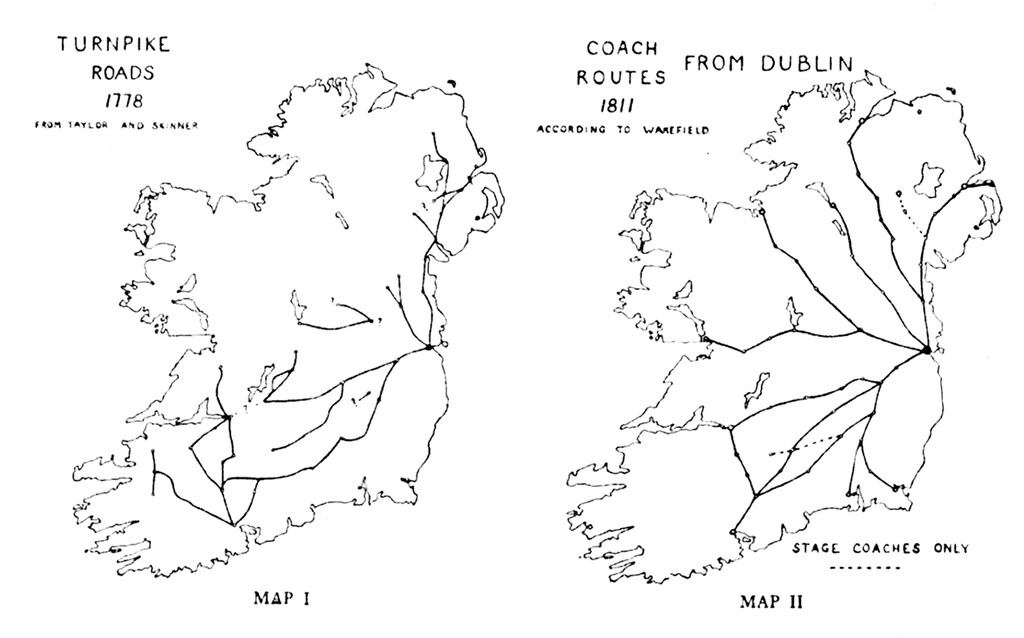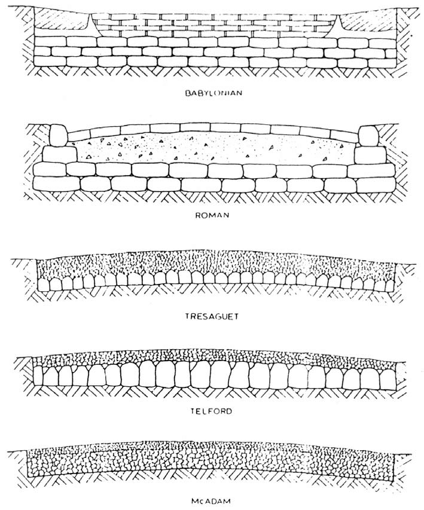One of the most striking features of rural parts of counties Down, Armagh and Louth is their dense network of small rural roads.
To understand how this came to be, we first need to look at the role of grand juries, the ‘presentment’ system which determined how money was allocated to build new roads and maintain existing ones, and how the rich and powerful manipulated it to serve their own ends. We shall look at how the system operated in Co Armagh, as it was fairly typical of the area.

How Were Roads Constructed?

At best, post-mediaeval Irish roads, were just beds of crushed stone; at worst, muddy green lanes.
Roman roads were very expensive to build, but extremely durable.
Thomas Telford’s most famous road ran from Hollyhead to London (now the A5). It became very familiar to Irish MPS after the 1800 Act of Union!
John MacAdam’s system greatly improved roads from the early 1800s. The road-bed was made from layers of graded, crushed rock and was quicker to lay than Telford’s. The surface was much less prone to rutting and much more long-lasting than earlier British/Irish roads (Romans excepted!)
Incidentally, Tarmac (tar MacAdam) wasn’t invented until the early 20th century and had nothing to do with MacAdam!